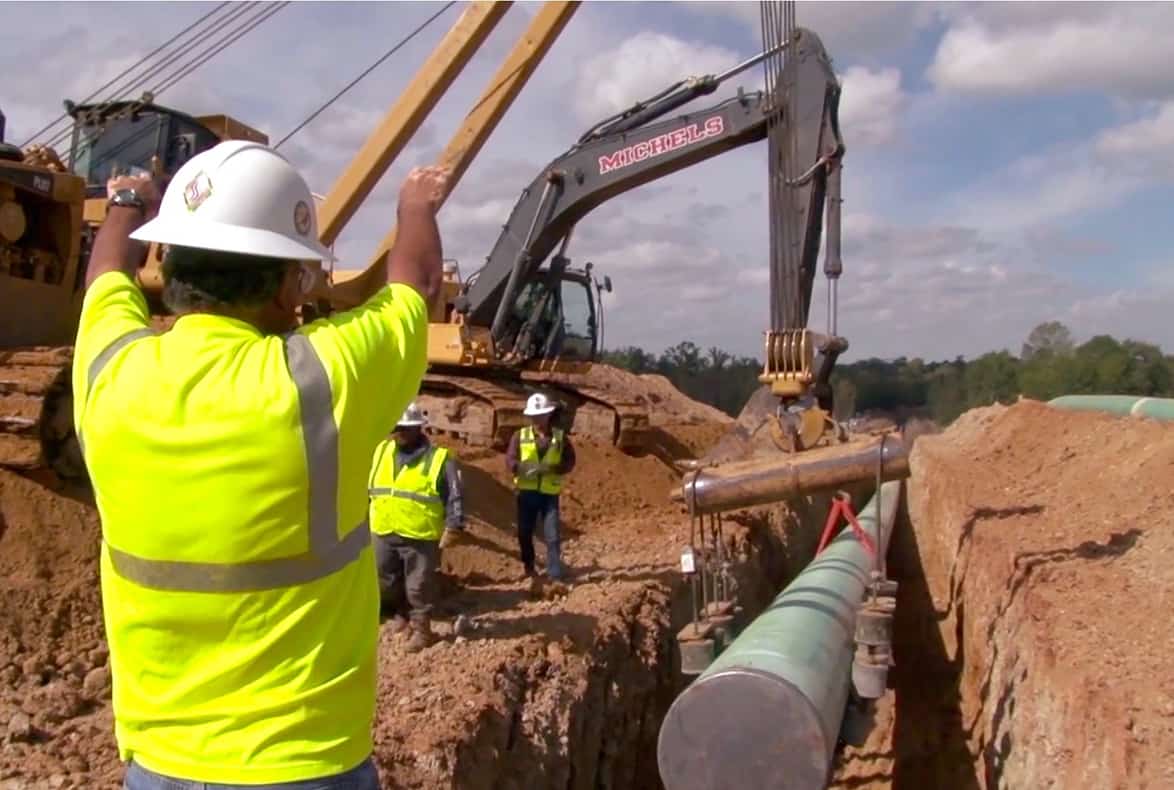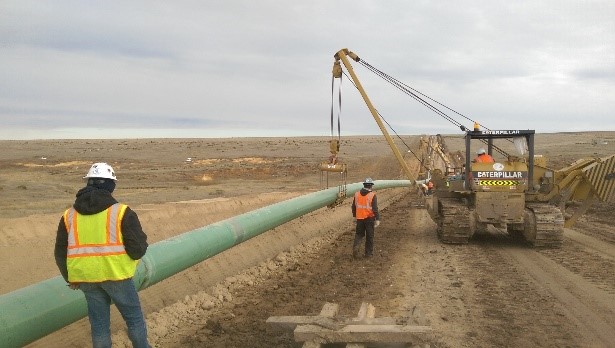Need Immediate Support? With Creek Pipe contact Info Ready
A Deep Dive Into Pipes Installation: Crucial Elements and Considerations for Effective Projects
Efficient pipe installation is a vital aspect of design jobs. It involves a series of aspects, from material option to accurate sizing and layout. Each decision can notably influence the system's efficiency and long life. Comprehending these parts is necessary for avoiding pricey mistakes. Creek Pipe Midland. As groups navigate through the intricacies of installation, a number of key considerations arise that warrant attention. What are the essential elements that can make or break a piping task?
Understanding Pipe Products and Their Applications
When picking pipe materials, one need to consider the certain applications and ecological conditions they will encounter. Different materials use distinctive buildings that accommodate different demands. As an example, PVC is lightweight and immune to deterioration, making it perfect for water circulation systems. Alternatively, steel pipes provide stamina and durability, suitable for high-pressure applications however might call for safety coatings to avoid rust.Copper pipelines are preferred for pipes as a result of their antimicrobial residential or commercial properties and simplicity of installation, while polyethylene is usually used in underground applications because of its versatility and resistance to cracking.The selection of product additionally depends upon temperature extremes, chemical direct exposure, and installation place. For high-temperature applications, products like CPVC or PEX can be useful. Inevitably, recognizing the features and constraints of each material aids in making educated choices that boost system performance and long life.
Value of Appropriate Sizing and Style
Appropriate sizing and design of pipes are critical for ensuring ideal circulation prices and lessening pressure loss. These factors also play a significant role in establishing the compatibility of products utilized in the installation. A methodical approach to sizing and layout can considerably improve the efficiency and longevity of a piping system.
Influence On Flow Prices
Flow prices in piping systems are seriously influenced by the sizing and layout of the pipelines. Correctly sized pipes assure that the fluid can move successfully, lessening turbulence and taking full advantage of flow ability. Large pipelines can cause decreased circulation speeds, while undersized pipes may limit circulation, leading to enhanced rubbing and prospective clogs. The style has to likewise consider aspects such as pipe material, interior surface area smoothness, and format, as these contribute to the total performance of fluid transportation. Additionally, the plan of installations and connections within the system can affect circulation rates. As a result, meticulous interest to pipe sizing and layout is vital for maximizing flow performance in any kind of piping installation project.
Pressure Loss Considerations

Just how can pressure loss significantly impact the effectiveness of a piping system? Stress loss is a critical element that can significantly decrease the performance of fluid transport systems. When pipes are incorrectly sized or created, extreme stress loss may happen, causing reduced flow rates and enhanced energy consumption. This inefficiency can result in greater functional prices and prospective system failures. Appropriate sizing and style are necessary to lessen stress loss, making sure that fluid dynamics remain ideal throughout the system. Engineers have to meticulously take into consideration variables such as pipe size, length, and material to attain a reliable equilibrium. Eventually, addressing stress loss throughout the style phase can boost integrity and durability, making it important for successful piping projects.
Product Compatibility Elements
Pressure loss is not the only variable that can influence the efficiency of a piping system; material compatibility also plays a substantial duty in overall performance. Making sure that the materials made use of in a piping system work with the fluids they will deliver is necessary. Different products can react detrimentally to different chemicals, leading to deterioration, deterioration, or contamination. This can inevitably jeopardize the honesty of the system and impact its long life. Furthermore, correct sizing and style are necessary to fit thermal development and contraction, which can better influence product performance. Examining factors such as temperature level, stress, and chemical structure is essential in selecting ideal materials, thus boosting system reliability and minimizing upkeep prices in the long-term.
Strategies for Accurate Pipe Installation
Exact pipe installation is vital for guaranteeing system efficiency and longevity. Several methods can improve the precision of this process. Mindful dimension is crucial; installers need to make use of top quality tools such as laser levels and tape measures to determine the specific sizes and angles needed. Next, proper pipe reducing strategies, like utilizing a pipe cutter rather than a hacksaw, warranty tidy edges that facilitate far better links. Furthermore, the use of placement tools, such as pipe jigs, can notably boost precision during setting up. It is likewise recommended to consider thermal development; permitting for sufficient spacing and expansion joints can protect against future imbalances. The installation group must follow maker guidelines to stick to specific referrals related to each pipe kind. By executing these strategies, the possibility of leakages and system failures lowers, ultimately adding to a more trusted piping system.
Guaranteeing Pipe Placement and Support
Correct alignment and assistance are crucial to the stability and efficiency of any piping system. Imbalance can lead to enhanced stress and anxiety on joints, potential leakages, and lowered efficiency. To ensure appropriate positioning, it is necessary to Read Full Report use ideal tools such as laser levels and placement gauges. These instruments assist attain precise positioning, guaranteeing that pipelines are mounted according to style specifications.Support systems need to be made to accommodate thermal expansion and contraction, in addition to the weight of the pipelines and their materials. Selecting the best kind of assistances, wall mounts, and braces is important. Each must be mounted at defined periods to prevent sagging or undue tension on the pipes. Routine assessments adhering to installation can aid recognize any kind of imbalances or indicators of poor support. By prioritizing alignment and support, one can greatly enhance the sturdiness and performance of the piping system.
Typical Installation Mistakes to Avoid

Examining and Assessment for Quality Control
Although the installation procedure may show up complete, thorough screening and evaluation are critical to making certain the long-lasting integrity of a piping system. Various approaches are employed to examine the stability of the installation, consisting of pressure tests, aesthetic examinations, and non-destructive testing (NDT) strategies. Pressure tests confirm that the system can stand up to operational problems without leaks, while visual examinations help recognize any type used dozers for sale by owner of noticeable defects in the pipes or joints. NDT techniques, such as ultrasonic or radiographic testing, supply understandings into the material integrity without compromising the system.Additionally, documenting the testing results is necessary for future referral and compliance with market standards. This documentation serves not just as a quality control action but likewise as a legal guard. Ultimately, a complete screening and evaluation protocol adds to the total security and efficiency of the piping system, ensuring it fulfills the required performance requirements with time.
Upkeep Tips for Long-lasting Pipe Systems
Preserving a pipeline system requires regular evaluations and keeping track of to identify potential issues before they escalate. Executing effective cleaning strategies is additionally vital for preventing build-up that can prevent efficiency. With each other, these methods add to the longevity and reliability of the piping framework.
Normal Assessments and Tracking
Regular inspections and surveillance are crucial for making certain the durability and efficiency of pipe systems. Regular analyses can assist identify possible concerns such as leaks, corrosion, or clogs before they escalate right into significant troubles. Carrying out a routine for regular assessments enables the very early detection of wear and tear, making it possible for timely fixings. Tracking pressure degrees and flow prices can also give important understandings into system efficiency, making sure that any abnormalities are addressed without delay. Furthermore, making use of sophisticated modern technologies, such as infrared cams or ultrasonic testing, can improve the inspection procedure by providing in-depth details regarding pipe problems. Ultimately, regular monitoring and assessments contribute to the dependability and durability of pipe systems, minimizing the threat of expensive fixings and downtime.

Efficient Cleaning Methods
Effective cleansing techniques are crucial for maintaining the honesty and performance of pipe systems. Frequently set up maintenance, such as flushing systems with water, aids remove particles and accumulation. For even more stubborn clogs, professionals commonly advise hydro jetting, which uses high-pressure water to tidy pipe insides thoroughly. Chemical cleansers can additionally be utilized however need to be chosen very carefully to stay clear of damaging pipelines. Additionally, employing tools like pipe electronic cameras can aid in identifying issue locations and making certain effective cleaning. Preserving correct drainage and avoiding the disposal of damaging materials down pipelines further add to longevity. In general, constant cleansing techniques not just improve efficiency but also reduce the danger of costly repair work in the future.
Often Asked Concerns
What Are the Labor Expenses Connected With Pipe Installation Projects?
Labor expenses for pipe installation jobs vary commonly, influenced by elements like job complexity, local wage rates, and required abilities (Creek Pipe pipeline construction). Usually, these costs can go to this site range from $50 to $100 per hour, relying on the labor force included
Exactly How Do Local Regulations Affect Pipe Installation Practices?
Neighborhood laws considerably influence pipe installation practices by establishing safety and security requirements, material requirements, and installation techniques. Conformity with these policies guarantees task safety and security, environmental management, and adherence to neighborhood codes, inevitably affecting overall task success and expenses.
What Tools Are Essential for Pipe Installation?
Crucial devices for pipe installation include monkey wrench, cutters, and fittings. In addition, sealants, measuring tapes, and degrees guarantee precision and sturdiness. Proper devices promotes performance and adherence to safety criteria during the installation procedure.
How Can Climate Conditions Influence the Installation Process?
Climate conditions considerably impact the installation procedure, as severe temperatures, rainfall, or wind can affect material honesty, worker safety and security, and project timelines. Appropriate preparation and scheduling are crucial to mitigate these prospective obstacles during installation.
Exist Service Warranties for Installed Pipe Solutions?
Warranties for installed pipe systems usually vary by producer and installation service provider. Generally, they cover flaws and workmanship for a specified period, making certain the system's reliability and offering satisfaction to the homeowner.